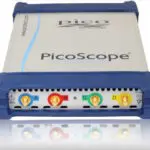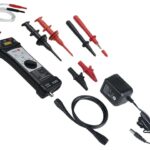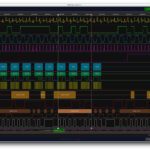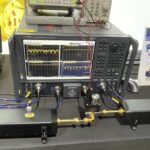USB oscilloscopes are compact and low-cost. If properly specified, they can be highly capable instruments. This FAQ reviews some important USB oscilloscope specifications including the number of channels, sample rate, bandwidth, refresh rate, and memory depth. Part 2 of this series considers specifications (available Sept. 8) for triggering, input ranges and probes, zooming, and control software.
The number of channels is a baseline consideration. Common channel counts range from 2 to 4, but there are USB oscilloscopes with a single channel. In addition, channels can be isolated (with various levels of isolation) and differential or single-ended. In addition, factors like resolution (8, 12, 14, and 16 bits are typical) and accuracy, for example, 0.25% DC vertical accuracy in a high-performance Oscilloscope, are important considerations. Once the number of channels and their basic specifications have been identified, it’s time to dig into characteristics like bandwidth, sample rates, refresh rates, and memory depth.
Sample rate
The sample rate is typically specified in Mega samples per second (MS/sec) or Giga samples per second (GS/sec). While the Nyquist criterion states that the sampling rate must be at least twice the maximum frequency to be measured, an Oscilloscope needs at least five samples to accurately capture a waveform, and more samples are better. Two types of sample rates (or modes) are common, real-time, and equivalent time sampling (ETS). ETS uses successive acquisitions to build a waveform. It’s only useful if the signal is repetitive and stable; it’s not useful for identifying transient events. Make sure the specified sample rate applies to all signal types, not to repetitive signals only.
So-called channel multiplexing can reduce the cost of a USB oscilloscope, but it also reduces performance. When multiplexing is used, the sample rate is dependent on the number of channels being used. For example, the sample rate for a single channel will be double the sample rate per channel when two channels are being used. Waveform, storage, processing, and displaying waveform constitute a complete capture period; each capture period includes sampling time and dead zone time, which combine to determine the sample rate (Figure 1).

Bandwidth
Bandwidth is limited by the sample rate and measures the range of frequencies that the Oscilloscope can display. The bandwidth needs to be much greater than the maximum frequency to be measured. For example, using a scope with a 20 MHz bandwidth to measure a 20 MHz sine wave will produce an attenuated and distorted waveform. A bandwidth at least 5X greater than the maximum frequency to be measured is a good starting point.
Memory depth
Digital storage Oscilloscopes (DSOs) use a buffer memory to store measurements. For a given sample rate, the size of the buffer memory will limit the period over which the Oscilloscope can capture a signal. The combination of sample rate and memory depth is an important consideration. At high sample rates, the buffer memory fills faster. One way to enable the use of a limited buffer memory over an extended timebase is to reduce the sample rate.
For example, a DSO with a high sample rate like 5 GS/sec but a small buffer capable of holding only 10k samples, will quickly run out of memory. In some applications, it may be necessary to reduce the sample rate to 25 kS/sec. On the other hand, a scope with a sample rate of 5 GS/sec and a buffer memory that can accommodate 2G samples can continue to operate at its full sample rate for a longer period without running out of memory (Figure 2).

Summary
Specifying USB Oscilloscopes is complex and several specifications like sample rate, bandwidth, and memory depth inter-relate and can limit performance. Part 2 considers specifications for triggering, input ranges and probes, zooming, and control software.
References
Oscilloscope selection guide, Dataman
The influence of waveform refresh rate on oscilloscope, Rigol
What to look for when choosing an oscilloscope, Pico Technology






Leave a Reply
You must be logged in to post a comment.